Scientists ask bird oglers to help study puffins (Update)
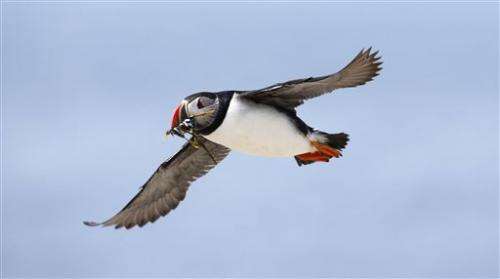
The Audubon Society wants bird lovers to contribute research to a project scientists hope will help save Atlantic puffins from starvation in Maine.
There are about 1,000 pairs of the seabirds, known for their multi-colored beaks and clownish appearance, in Maine. Audubon says the number of puffin fledging chicks has declined in the last two years, possibly because their key food source, herring and hake, are leaving for cooler waters. Puffins are on the state's threatened species list.
Audubon maintains three web cameras on Seal Island, a National Wildlife Refuge in outer Penobscot Bay, one of the key puffin habitats in Maine. Volunteers are being asked to watch the puffins and answer questions about their feeding behavior, said Steve Kress, director of the National Audubon Society's seabird restoration program.
From 2007-2011, Kress said that 77 percent of puffin pairs on Seal Island produced fledglings, or birds that are able to fly. The number declined to 31 percent in 2012 and 10 percent in 2013. While 2014 "appears to be better," he said, it's too early to tell.
"This is a citizen science project, hoping to advance the science as well as entertain the viewers," Kress said. "There are some questions that can be better answered through lots of people viewing."
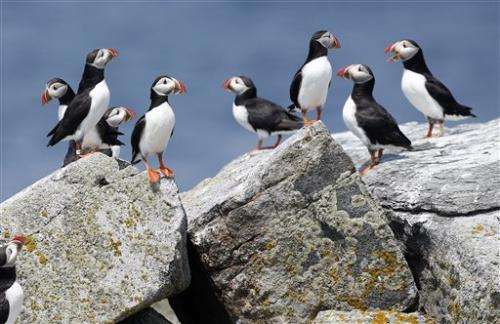
Almost all of Maine's puffin population nests on three islands—Matinicus Rock, Eastern Egg Rock, and Seal Island. Kress and others believe the decline in fledged puffin chicks is tied to rising water temperatures in the Gulf of Maine.
The puffins are left to try to eat butterfish, a species more available as herring and hake—key food species for puffins—seek colder waters, Kress said. Scientists say surface temperatures of the waters in the Gulf of Maine have increased slightly each year since 1982, but the pace increased after 2004.
With fewer herring and hake, puffins have been giving their young butterfish, but those fish are too big for puffin chicks to eat, and many of the birds starve and die. That's what happened to Petey, the puffin chick the 2012 camera focused on.
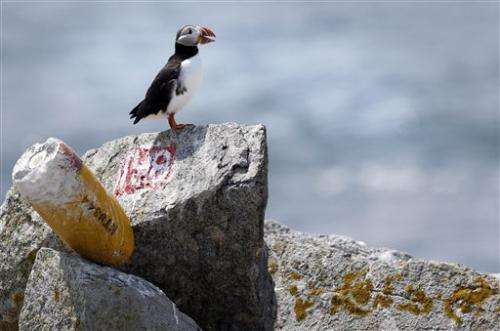
Two of Audubon's cameras focus on the rocky areas where puffins roost. Another is inside a burrow, providing a close-up view of a fuzzy puffin chick.
Last year's featured puffin chick, Hope, survived. This year's chick, Pal, hatched around June 25.
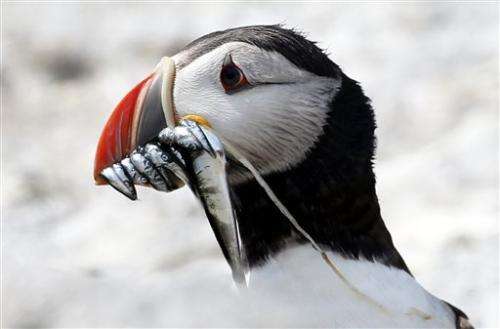
Audubon is asking web camera watchers to observe Pal and answer a survey about what kind of fish his parents feed him, including how many and when. The web cameras have attracted more than 4 million views since 2012, and more than 1,000 people have completed Audubon surveys.
Explore.org, a Los Angeles-based nonprofit group that runs dozens of wildlife web cameras around the world, installed the cameras and is partnering with Audubon. Explore.org founder Charles Annenberg said the project is about "making science fun again."
Kress said the information gathered by puffin watchers will be included in published papers. The goal is to document how much food it takes for puffin chicks to fledge, he said.
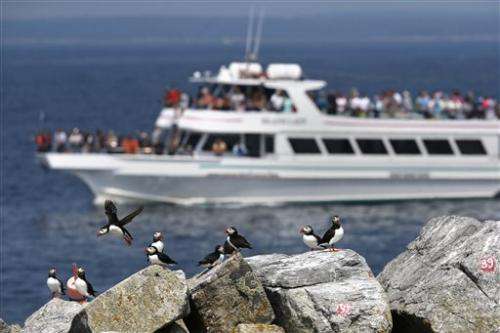
Puffins, which spend most of their lives at sea, breed in the spring before returning to the ocean in early August. The chicks go to sea after their parents feed them for about 40 days.
More information: Puffin cam: explore.org/live-cams/player/puffin-burrow-cam
© 2014 The Associated Press. All rights reserved.


















